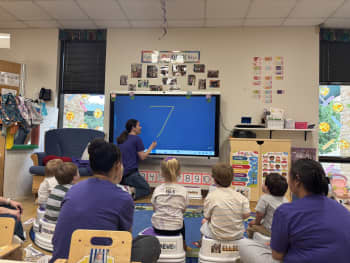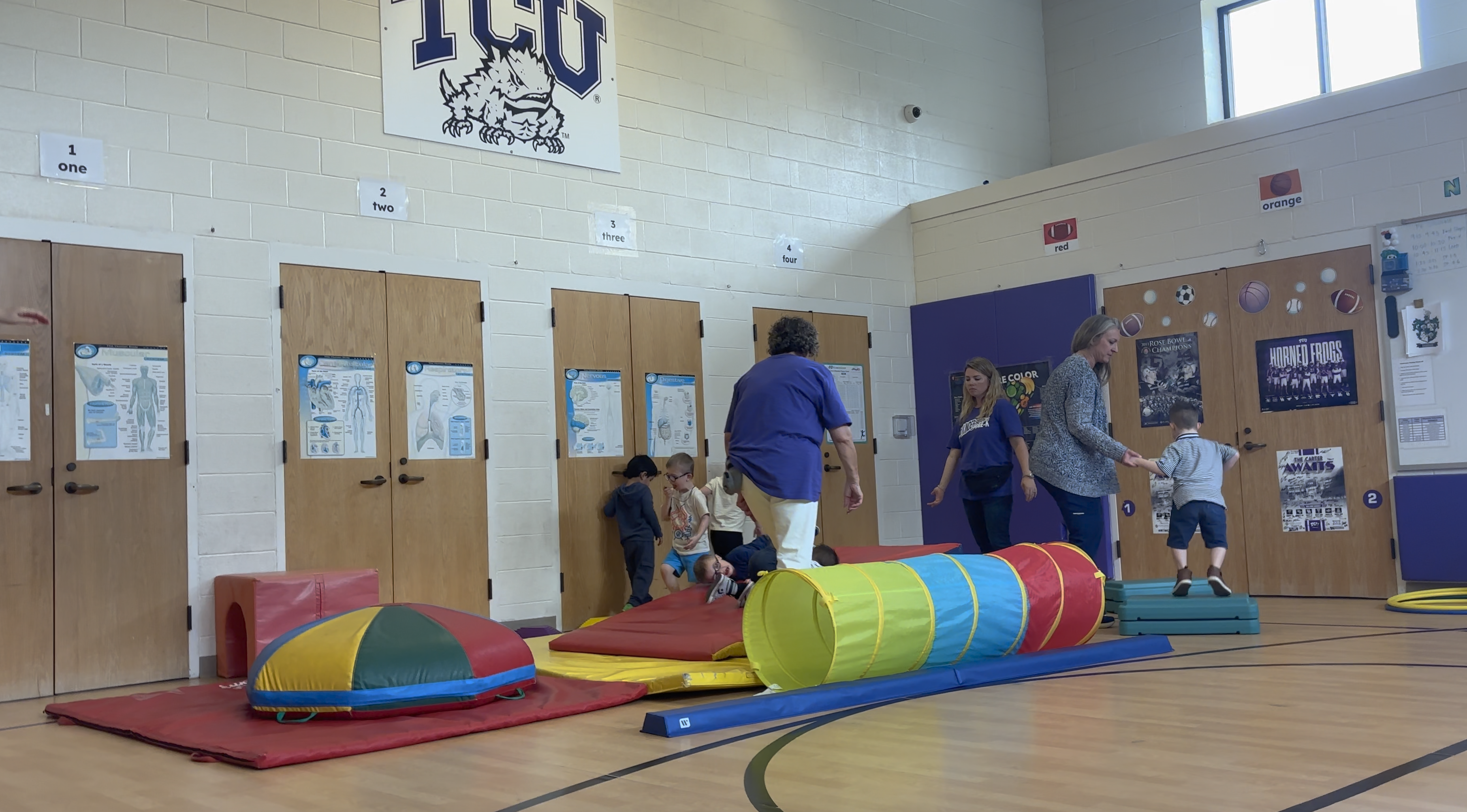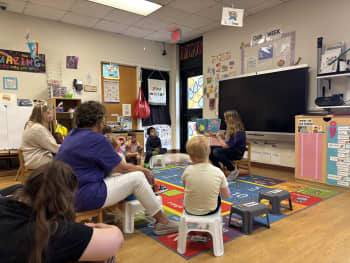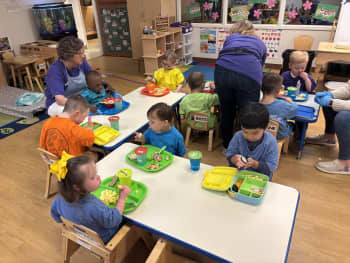KinderFrogs: a journey of growth, one step at a time
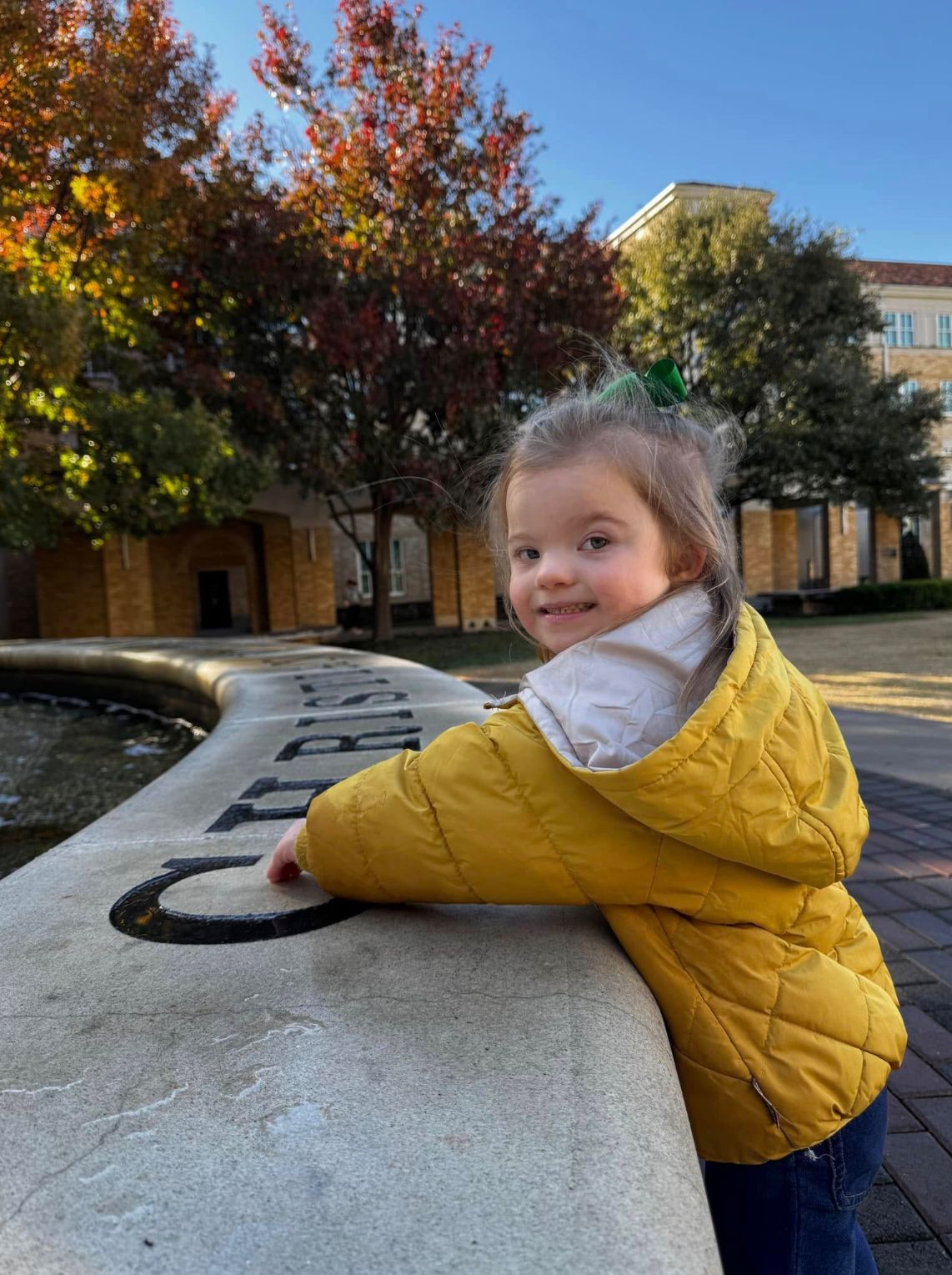
KinderFrogs is purposefully designed environment for young children with Down syndrome.
Tucked away on TCU’s campus off Stadium Drive and Cantey Street, the school has been working with children and families since 1999. Every detail, from the size of the chairs to the flow of the day, supports and promotes early development and independence.
Every milestone is celebrated.
Learning does not follow a straight line, it unfolds through small, meaningful steps.
The program has a three-tiered classroom structure meant to help children become ready to attend school in mainstream classrooms. KinderFrogs works with children ages 18 months through 6 years. The broader developmental path goes from early mobility and communication, to increasing independence, to the academic and social foundations needed for kindergarten.
While each classroom follows a similar daily routine with meals, play, learning activities and rest, the developmental goals, expectations and skills being supported grow more complex at each stage.
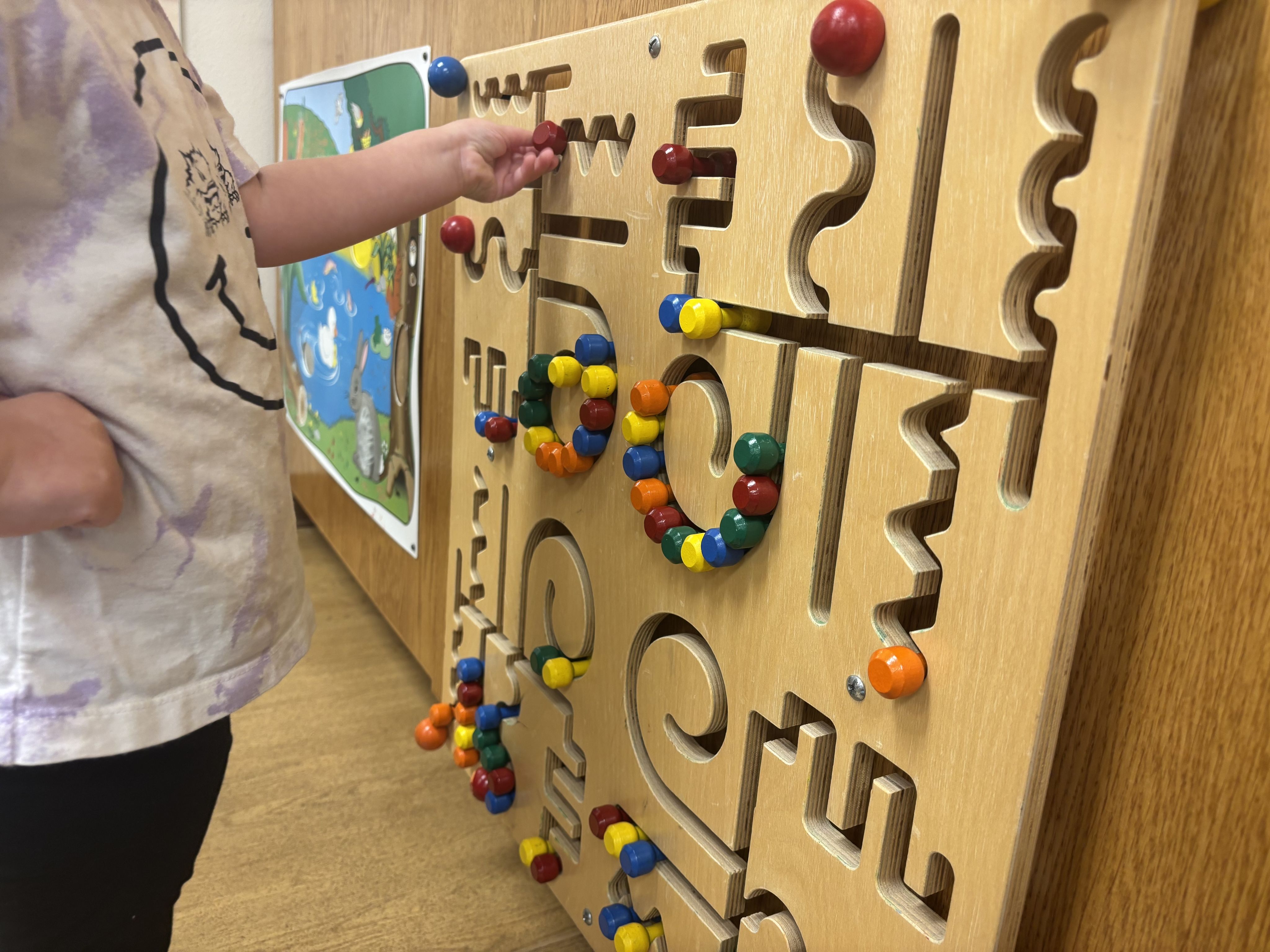
First Steps: building the foundation
The First Steps classroom works with the youngest children. Lead teacher Libby Middleton said the main goal for these students is building autonomy, learning to walk independently and feed themselves with as little support as possible.
“We structure learning throughout our day masked as play," Middleton said. "Because children this age learn through exploratory play, we create an environment where we can incorporate goals and learning naturally.”
Motor development is at the heart of their routine. That means climbing, crawling, cruising and eventually walking.
“We want to make sure our students have the gross motor skills needed to explore their environment and relationships within the classroom,” she said.
Middleton said social skills are embedded in everything they do. Fine motor and self-help skills, like using a spoon or holding a crayon, are introduced through activities that feel like play.
Each day, classes spend time in the gym for physical education. Coach Amy Talbert adjusts every session to match the children’s developmental levels, making sure the activities support their individual motor skills and physical growth.
KinderFrogs working on their motor skills through music. (Video by Yasmin Lopes)
“This group has been working on core stability and muscle strength needed for walking and moving around,” she said. “We started the year with seven students who were not yet walking and now only two are not. That is a huge accomplishment!”
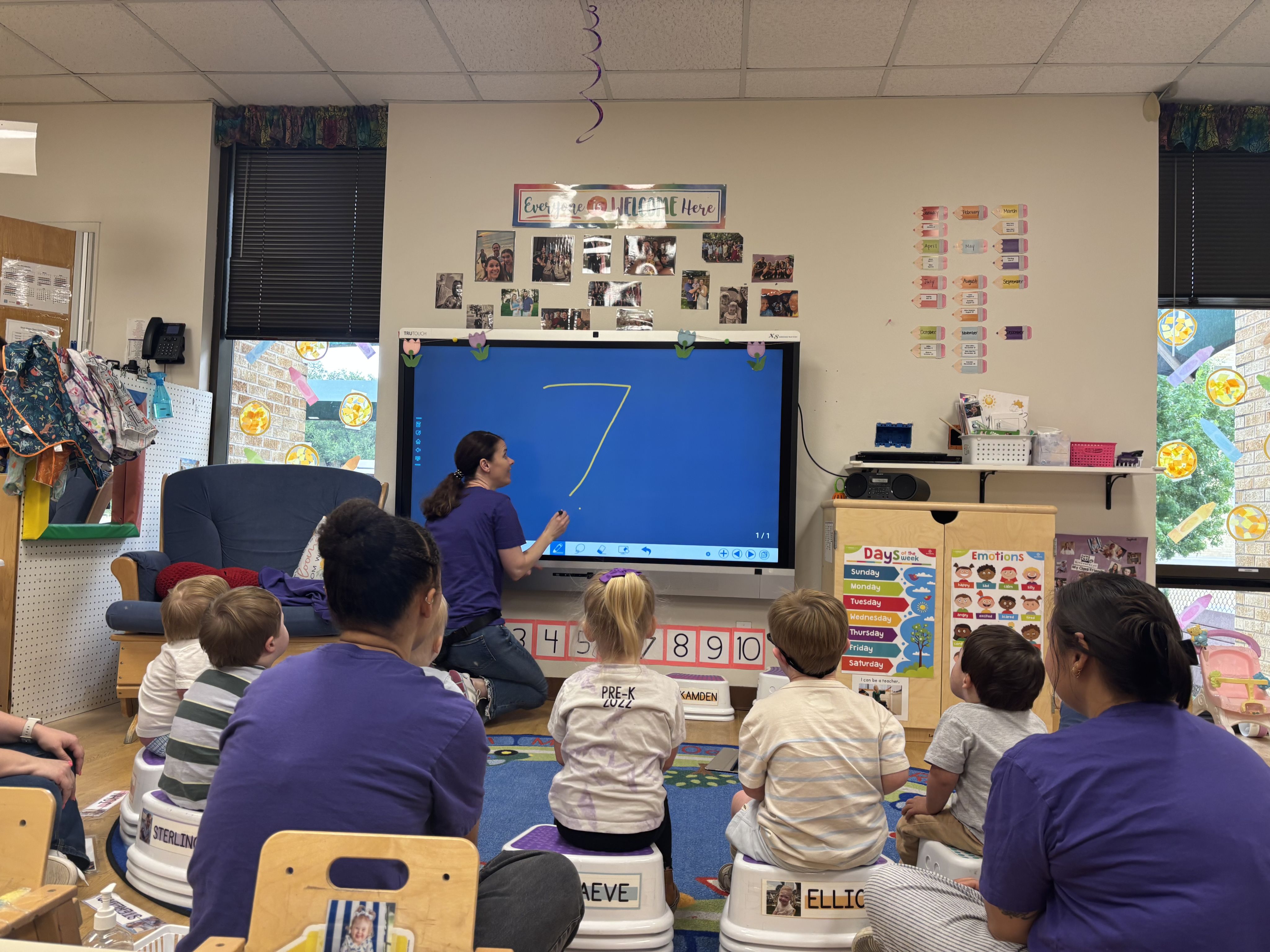



Kinder K: strengthening independence
Kinder K is for ages 3 to 4. This class is all about strengthening independence in every developmental domain.
Just like in First Steps, physical education reflects the group’s growth. Talbert said the focus for Kinder K is more refined.
“For Kinder K, we focus on balance and transitions using a circuit that changes daily,” she said. “The kids go under, over and balance on steppingstones, these activities help their muscles learn how to work together.”
KinderFrogs playing on the circuit to work on their motor skills. (Yasmin Lopes)
KinderFrogs playing on the circuit to work on their motor skills. (Yasmin Lopes)
“We also practice moving between tasks, following directions, and basic locomotor skills like galloping and hopping to music," she said. "At this stage they are physically stronger and more aware of their bodies, so we can add more complexity to keep challenging them.”
The activities reflect how their independence is growing, both in the classroom and in motion.
KinderFrogs working on their basic locomotor skills during PE (Video by Yasmin Lopes)
Building skills through stories and play
The focus in the classroom is gross and fine motor skills, but also adaptive, cognitive and especially social skills like cooperative play, said teacher Kaitlin Kountz.
“Each week we have a theme with a letter, shape, and color,” Kountz said. “We build that into everything, story time, toys, play centers.”
During the ocean animals-themed week, sea creatures were everywhere, from the books they read to imaginative center play and the decoration of the room.
“Oh look, this orange fish wants to eat some of that ice cream,” Kountz said. “Can you give him two scoops?”
It is a simple game, but it teaches counting, communication and imaginative play.
Kountz also uses modified tasks to meet each child where they are developmentally.
“Some students need choices when answering questions; others do not,” she said. “We adjust accordingly."
That individualized approach means that every effort, no matter how small it may seem, is meaningful.
“The small wins are often big ones for our kids, so we cheer, dance, and give lots of high fives," Kountz said.
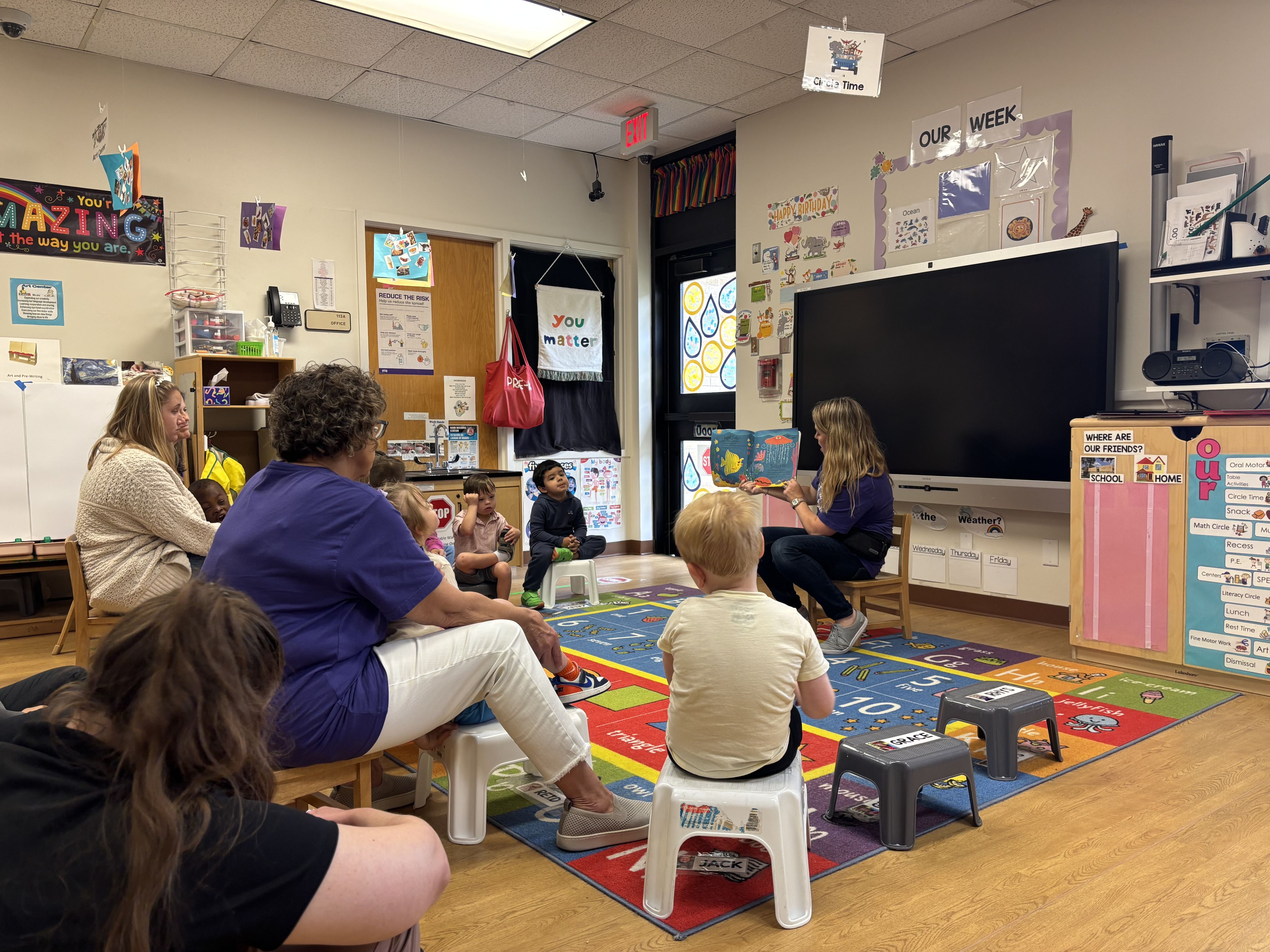
Communication with families: partnering in development
Teachers use the Seesaw app to keep parents informed about the day’s activities. The app allows teachers to share details about what the kids did during the day, whether they mastered a new skill, had a great mealtime or played well with others, said Angela Rangel, the academic program specialist.
"It’s a simple yet effective way to keep parents in the loop about their child’s progress," she said.
Teachers also conduct assessments three times a year, providing families with a more in-depth look at their child’s development and areas of growth.
"It’s all about creating a partnership with parents to ensure that everyone is on the same page and working together to support each child’s journey," Rangel said.
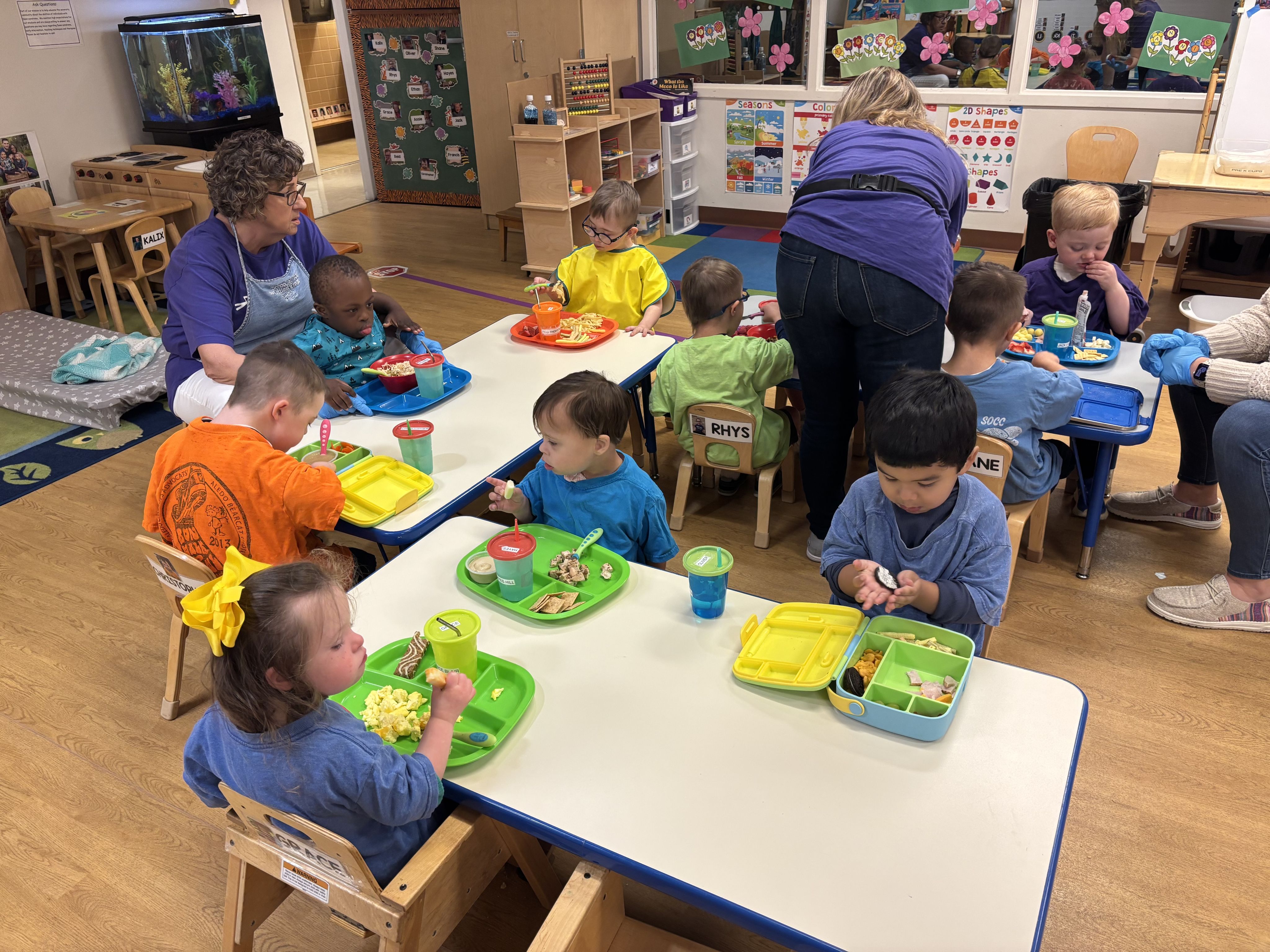
L.E.A.P.: getting ready to leave
In the L.E.A.P. classroom, the focus shifts toward kindergarten readiness, but without losing the joy and support that KinderFrogs is known for.
“At this stage, my main goals are to foster independence, develop communication and social-emotional skills, and support each child's physical and cognitive development,” Courtney Heigel, the L.E.A.P. teacher, said.
Her students are building strength, taking on more responsibility and practicing the kind of skills they will need for a smooth transition to their next school.
Heigel keeps the structure familiar with circle time, learning centers, play, meals and rest, but the expectations are higher.
“We collaborate with local kindergarten teachers to discover what skills they feel are essential for a smooth transition,” she said. That includes things like following multi-step directions, recognizing letters, using expressive language and handling daily routines more independently.
Social and communication skills are practiced constantly, merged into everyday interactions.
“We embed these skills in real-life scenarios, like negotiating over a toy, making a choice during snack time or helping a friend with a task,” she said.
Visual supports, modeling and social stories help students build confidence and problem-solving skills.
Leadership also plays a significant role in the classroom.
“Our students enjoy taking on leadership roles,” Heigel said, referring to line leaders, snack helpers and peer comforters. “Peer modeling is powerful, students learn so much from watching and imitating one another."
Each day ends in a quiet circle, where teachers and students look back on what they did and talk about what is coming tomorrow. It is a way to reflect, connect and prepare for what is next while still feeling grounded in the community they have built.
Professor Heigel and her students going over their day and what they have learned. (Video by Yasmin Lopes)

